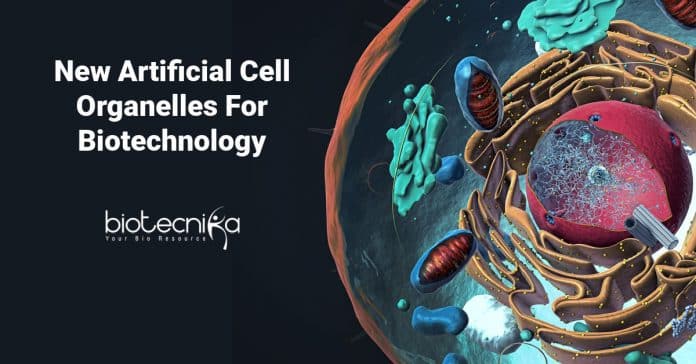Novel Artificial Cell Organelles Developed By Scientists
Biotechnology experts have been trying to reprogram innate cell organelles for various other processes for some time-with mixed outcomes since the research laboratory devices are specialized in the role of organelles. Dr. Joanna Tripp, a budding researcher at the Institute for Molecular Biosciences established a novel approach to create fabricated organelles in live yeast cells.
To this end, she utilized the complex branches of tubes and globules in the endoplasmic reticulum (ER) that encircles the nucleus. Cells repeatedly fasten bubbles, or tubes, from this membrane layer for carrying materials to the plasma membrane. In plants, these tubes may also be utilized for the collection of proteins in seeds. Such kinds of proteins are tagged with an ‘address label’, the Zera sequence, which steers them to the endoplasmic reticulum and assures that repository proteins are stored in the vesicle. Tripp has currently employed Zera to produce vesicles of interest in yeast cells and present various biocatalysts of a biochemical cellular pathway.
This stands for a milestone from a biotechnical viewpoint. Yeast cells, the ‘pets’ of artificial biology not only produce many helpful natural compounds, yet can likewise be genetically altered to produce industrially intriguing particles on a grand range, such as biofuels or anti-malaria medicine.
In addition to the required output, nevertheless, unwanted intermediates or lethal by-products often happen too. Moreover, the product can be lost because of pores in the cell, or responses can be really slow. New artificial cell organelles provide repairs, with only the wanted enzymes (with address labels) running into each other, to make sure that they collaborate more effectively without interrupting the rest of the cell, or being disrupted themselves.
They made use of the Zera sequence to put forth a three-level, synthetic biological pathway inside vesicles, Tripp clarified. They have hence produced a response space comprising exactly what we desire. They were successful in illustrating that the metabolic pathway within the vesicles works alone.
The biotechnologist chose an industrially significant particle for this procedure: muconic acid, which is then processed in industrial-scale to adipic acid which is an intermediate for nylon and diverse artificial materials. Muconic acid is presently extracted from crude oil. A future large-scale manufacturing using yeast cells would be dramatically extra eco-friendly and sustainable. Although a section of the intervening protocatechuic acid is lost since the vesicle membrane is with pores, Joanna Tripp finds this as a solvable issue.
Professor Eckhard Boles, Head of the Division of Physiology and Genetics of Lower Eukaryotes discerns that new artificial cell organelles is a cutting edge novel method of artificial biology. With the newfangled synthetic organelles, they now have the choice of creating numerous processes inside the cell once again or to maximize them.
The method is not limited to yeast cells, yet can be utilized for eukaryotic cells as a whole. It can additionally be applied to other problems, e.g. for responses that have formerly not been able to occur in living cells because they might need enzymes that would certainly interrupt the cell metabolic process.
New Artificial Cell Organelles
Author: Geema George






























